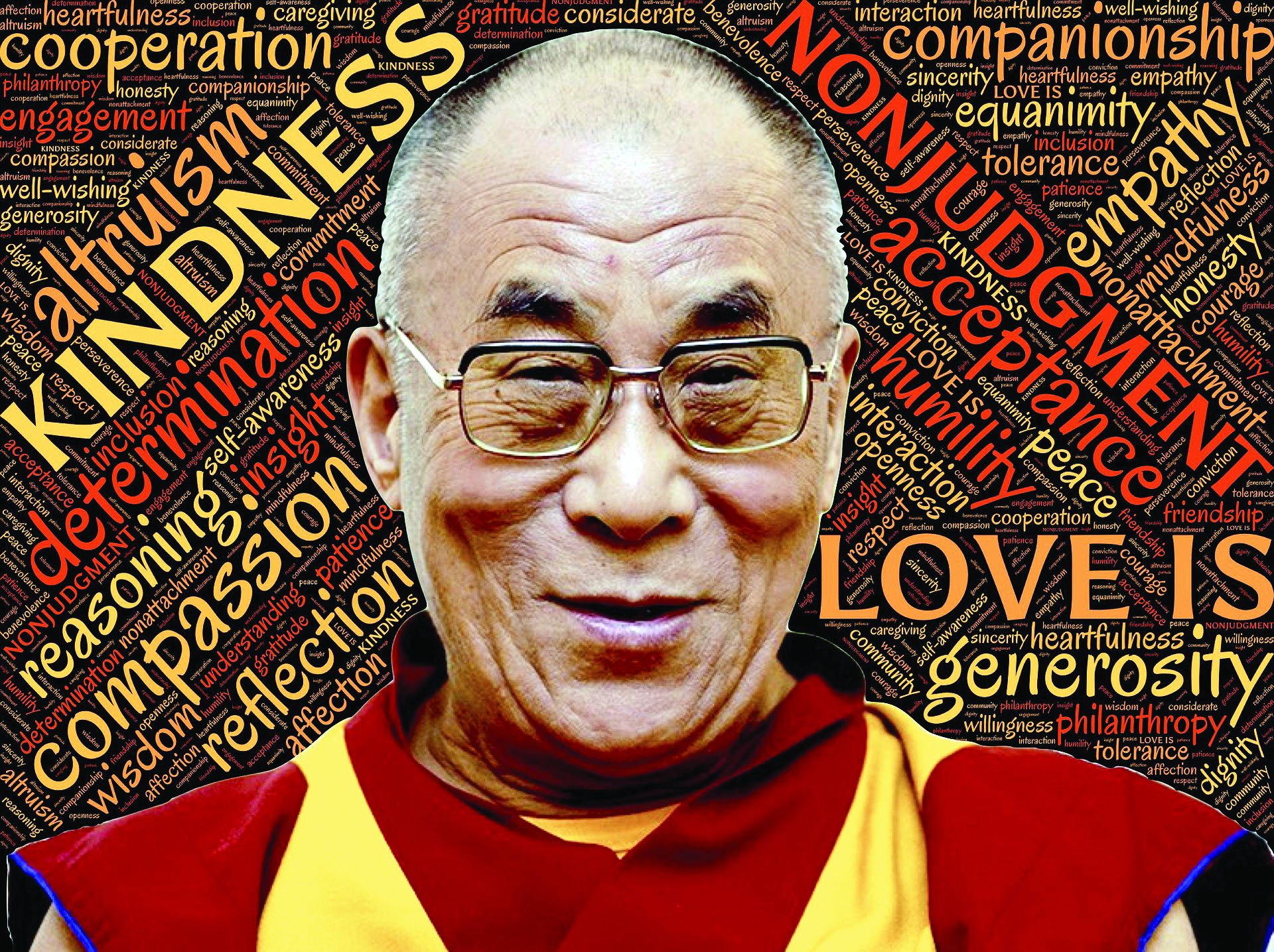Messenger of peace
In His Holiness the Dalai Lama and His Footsteps, Deepak Singh compactly chronicles the awe-inspiring life incidents and works of the 14th Dalai Lama, Tenzin Gyatso. Excerpts:

His Holiness the Fourteenth Dalai Lama, Tenzin Gyatso, is the spiritual leader of Tibet and he was head of the state of Tibet until voluntarily relinquishing his political power to the elected leadership in 2011. He was born on the 6th of July, 1935, to a peasant couple in a small village named Taktser in Amdo province in north-eastern Tibet. At the bare age of two, the miracle child Lhamo Thondup was recognized as the reincarnation of the Thirteenth Dalai Lama, Thubten Gyatso. A new journey began. On the 22nd of February, 1940, at the age of five, he was formally enthroned at a traditional ceremony at the Potala Palace in the Tibetan capital Lhasa. Immediately, he began his monastic education at the monastery. On the 17th of November, 1950, at the age of sixteen, the Dalai Lama was called upon to assume full political power following China’s invasion of Tibet the previous year. In 1954, His Holiness went to Beijing for peace talks with Mao Zedong and other Chinese leaders including Deng Xiao ping and Zhou Enlai. When he was twenty three, he completed his education, and was awarded the Geshe Lharampa degree, which is the equivalent of the Doctorate in Buddhist Philosophy, amidst the peak of Chinese aggression in Tibet. In 1959, at the age of twenty four, he was compelled to escape from Tibet, and choose a life of exile in India due to the increasing repression under communist China’s occupation. Since then, His Holiness has been living in Dharamshala in Himachal Pradesh in India, which eventually became the headquarters of the Central Tibetan Administration.
Soon after his arrival in India, the Dalai Lama established the Central Tibetan Administration on the 29th of April, 1959, to succeed the Gaden Phodrang Government, which had governed Independent Tibet since the era of the Fifth Dalai Lama in 1642. An advocate of democracy, he introduced the Tibetans in exile to the practice of a self-governing system, and instituted the first election of Tibetan people’s representatives on the 2nd of September, 1960. In 1963, His Holiness presented a draft democratic constitution for a future Tibet, followed by a number of reforms to democratise
the administrative system of the Tibetan community in exile. These initiatives eventually led to the promulgation of a new democratic constitution called the Charter of the Tibetans in Exile in 1991, which provided for the expansion of the Tibetan Parliament in exile and empowered it to elect the Kalons of the Tibetan administration.
In March 2011, in order to bring about complete democratisation of the Tibetan polity, the Dalai Lama announced his decision to transfer his political responsibilities to an elected leadership. As decided, on the 29th of May, 2011, the Dalai Lama signed into law, the formal transfer of his temporal powers to the democratically elected leader and his group of ministers.
Today, at 87 years of age, His Holiness the Dalai Lama is recognised globally as an embodiment of the highest human aspirations – the end of all sufferance and the nurturing of happiness for all sentient beings. To spread the message of peace, the Dalai Lama has travelled to over 67 countries, and met kings, queens, ministers, world leaders, religious heads, eminent scientists, and millions of common people. He has authored and co-authored more than 116 books in Tibetan and English languages.
In recognition of his relentless efforts to spread the message of peace, non-violence, inter-religious harmony, universal brotherhood and compassion, the Fourteenth Dalai Lama has been honoured with more than 150 awards, accolades and honorary doctorates including the Noble Peace Prize in 1989 and the US Congressional Gold Medal in 2007.
This book, which is a compilation of his life and works, selected speeches, messages, articles, teachings, is a biographical tribute to His Holiness the Fourteenth Dalai Lama, the eternal messenger of global peace.
(Excerpted with permission from Deepak Singh’s His Holiness the Dalai Lama and His Footsteps; Published by Har Anand Books)



